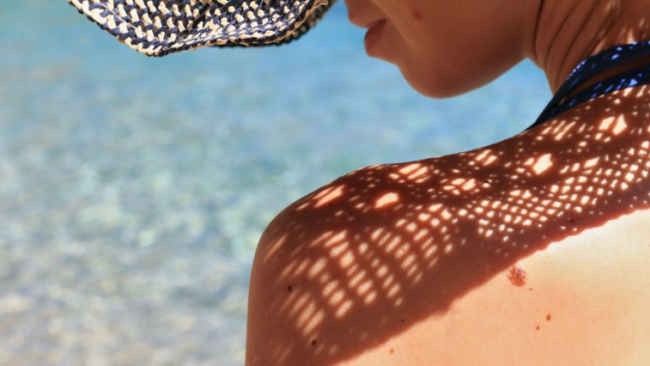The majority of skin cancer is caused by overexposure to ultraviolet (UV) radiation from the sun and artificial sources such as solariums.
UV radiation is strong enough to damage skin cells and cause skin cancer.
UV radiation
Sunlight is made up of light, heat and ultraviolet (UV) radiation. Visible rays of the sun are light-giving rays, while infrared rays provide heat.
UV radiation is the part of sunlight that causes sunburn and skin damage and leads to premature ageing and skin cancer. There are three types of naturally occurring ultraviolet rays - UVA, UVB and UVC.
- UVA radiation penetrates deep into the skin, affecting the living skin cells that lie under your skin's surface. UVA causes long-term damage like wrinkles, blotchiness, sagging and discoloration, and also contributes to skin cancer.
- UVB radiation penetrates the top layer of skin and is the cause of skin tanning, sunburn, and skin cancer.
UVA and UVB are of concern because of their potential to cause skin cancer. UVC does not reach the earth's surface and is absorbed or scattered in the atmosphere.
Can I feel UV radiation?
UV radiation can not be seen or felt. UV levels are not related to air temperature; maximum UV levels occur around midday when the sun is directly overhead. High levels of UV radiation also occur on cool days.
Remember, you can still get burnt on cloudy days, especially if cloud cover is thin. Cloud scatters the UV radiation in all directions and although you receive less direct UV radiation, you may receive more indirectly. Heavy cloud does decrease the amount of UV radiation, while scattered patchy cloud has little or no effect on UV radiation levels.
When is UV radiation most damaging?
UV radiation is dangerous for skin when it reaches a UV Index level of three or above. UV radiation levels are strongest over the middle hours of the day – between 10 am and 3 pm – but are also strong enough outside of these hours to cause skin damage. UV radiation is strongest during the months that the sun is directly overhead. In South Australia, from August to May, UV levels across the day range from moderate to extreme on most days.
How is UV measured?
UV radiation levels are divided into low (one to two), moderate (three to five), high (six to seven), very high (eight to 10) and extreme (11 and above). Once UV reaches a moderate level it is strong enough to cause damage to the skin.
A UV Index level of three is high enough to cause skin damage, so it is important to protect your skin when the UV radiation level is three and above. The higher the UV radiation levels, the less time it takes for skin damage to occur.
The Bureau of Meteorology predicts UV levels with the weather forecast every day and produces the SunSmart UV Alert.
